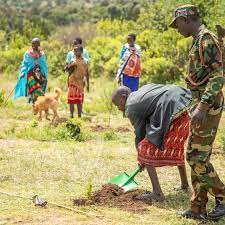Community forests often represent a collective approach to natural resource management, where decision-making is shared among community members, and benefits are distributed equitably. Community fores
Community forests are forests fully owned by local communities and are held in trust by their local governments.
ts are distinct from state-managed or privately owned forests because they empower local communities to take ownership of their land and its resources, thereby fostering a sense of stewardship and responsibility. They have the exclusive rights to decide who to use a particular resource and to what extent. Landscape restoration has emerged as a key strategy for combating climate change, protecting biodiversity, and improving the livelihoods of rural communities. Among the many approaches to restoration, community-managed forests play a crucial role in regenerating ecosystems, enhancing carbon sequestration, and fostering sustainable land-use practices. By empowering local communities to manage and conserve their forest resources, community forests offer a pathway to both environmental sustainability and socio-economic resilience. Case studies of community forests in landscape restoration include Nepal’s Community Forestry Program where local communities have gained legal rights to manage over 40% of the country's forests; Mexico’s Payment for Ecosystem Services (PES) program which offers financial incentives to landowners and local communities for the conservation and restoration of ecosystems, including forests; and the Gambia's participatory forest management approach. The role of community forests in landscape restoration is a testament to the power of collective action, local knowledge, and environmental stewardship in addressing some of the most pressing challenges of our time.



0 Comments